Jofukuji Castle
-Castle up and down like roller coaster-
Overview
Name: Jofukuji castle (Jofukuji-jo)
Alias: Ange-jo (Ange castle), Matsutake-jo (Matsutake-castle), Niijiro-jo (Niijiro castle)
Place: ShimoOngata-cho Hachioji city, Tokyo
Type: Mountain Castle
Built: 14th century
Remaining remnants: Clay walls and moats
Title:
Brief History
Jofukuji castle (浄福寺城) is located on the mountain, one of 150 meter high from hillside at behind of Jofukuji temple next to Jinba Kaido road, in the western part of Hachioji city. There is no clear name of this castle thus this castle is also called as Matsutake castle, Ange castle or Niijiro castle. Jofukuji castle is only 5 kilometer north from Hachioji castle, a large mountain castle of the area.
Roads connect Kai province and Kanto region
Kai province (Yamanashi prefecture) is separated from Kanto region by mountain ranges such as Tanzawa mountain or Chichibu mountain, but at the border of current Yamanashi prefecture, Kanagawa prefecture and Tokyo metropolis around Lake Sagamiko, only low mountains separate three provinces and roads connects these areas running across the mountains.
These roads are Ome Kaido road passing Yanagisawatoge path, Hinohara Kaido road crosses Sengentoge path, Jinba Kaido road runs Wadatoge path, Koshu Kaido road crosses Kobotoketoge path, and Tsukui Kaido road runs along Sagamigawa river from north. To guard these roads, Mitake castle, Hinohara castle, Jofukuji castle, Hachioji castle (Tokyo metropolis) and Tsukui castle (Kanagawa prefecture) were built or expanded by Hojo clan to watch and shut these roads.
Among these five roads, Koshu Kaido road passing Kobotoketoge path is a main route crosses the mountain at shortest distance both now and old, thus Hachioji castle located at the next of this road became the largest one and headquarter of this area. Jinba Kaido road and Tsukui Kaido roads are second easiest roads to cross, thus Jofukuji castle and Tsukui castle were so so large castles.
Origin of Jofukuji castle
Precise year is unknown but it is said that Jofukuji castle was built by Nobushige Oishi (?-? ) in 1384. Oishi clan was a retainer of Uesugi clan which was the general governor of Kanto region, and got the territory of western part of current Tokyo metropolis as a reward for activation. Oishi clan became an important retainer of Uesugi clan and served as a deputy governor of Musashi province (Tokyo province and Saitama prefecture). Main castle of Oishi clan was Takiyama castle, but Jofukuji castle worked an important border castle against Kai province.
But since the beginning of 15th century, old power of Kanto region such as Ashikaga clan or Uesugi clan declined and Hojo clan which was the retainer of Imagawa clan, a warlord of Suruga province (eastern half of Shizuoka prefecture), captured Izu province (Izu peninsula) and expanded into Kanto region. After long battle, Hojo clan totally defeated Ashikaga clan and Uesugi clan at the battle of Kawagoe castle in 1546 and became the ruler of Kanto region. At this time Oishi clan subordinated to Hojo clan and accepted Ujiteru Hojo (1540-1590) as their successor.
Necessity of border protection and expansion of castle
In 1550’s, as Hojo clan and Takeda clan, a warlord of Kai province, made alliance along with Imagawa clan, then border of Musashi province and Kai province was quiet. But in 1568, Takeda clan broke the alliance with Imagawa clan and invaded them, thus Hojo clan tried to support Imagawa clan and Takeda clan also broke. Hojo clan allied with Uesugi clan which was the lord of Echigo province (Niigata prefecture) which was the fatal enemy of Takeda clan, thus Takeda army invaded Hojo territory such as Hachigata castle (Saitama prefecture), Takiyama castle (Tokyo metropolis) and Odawara castle in 1568.
These castles stood against the attack of Takeda clan and later both clans became friendly again, but Ujiteru thought a necessity to secure the border then moved his main base from Takiyama castle to Hachioji castle which can directly control the border. As Jofukuji castle was just at the next of Hachioji castle, it might be used as a branch castle of Hachioji castle to guard the backside of it.
Furthermore, Takeda clan was ruined by central ruler Nobunaga Oda (1534-1582) in 1582, and Hojo clan allied with Ieyasu Tokugawa (1543-1616) who seized Kai province after the death of Nobunaga but also had to guard the border. Especially when Ieyasu allied with next central ruler Hideyoshi Toyotomi (1537-1598), Hojo clan expected invasion of central authority. Under such situation, Jofukuji castle had been continuously expanded.
Structure of Jofukuji castle
Jofukuji castle consists of main ridge spread from the peak of the mountain toward northeast, and several branching ridges goes down toward southward from main ridge, Now western branching ridge is used as climbing route, and visitors had to walk up this seer ridge passing several terraces and dry moats. The central area of this castle is a two layer flat terrace of elliptical shape at the western edge of main ridge. This central area is not so large and sophisticated, thus it might keep the shape of original build.
Ahead of central area, walk down sudden drop and across deep dry moat, then reached to another edge of main ridge. Here is a bottleneck of the mountain thus a tall clay wall sandwiched by two deep dry moat is built to shut the enemy at this point. A branch ridge continues to southwestward and the slope between these two ridges area gentle, thus this slope is protected by combination of four vertical dry moats to prevent the movement of climbing up enemies. Residence of the lord might exist at the place of Jofukuji temple.
Looking at the structure and plan map of the castle, the main area seems the oldest with plain terrace, main ridge is the next with deep dry moats, and branch ridges were the newest with small but technically built gates. Probably main area was built at the first at the time of Oishi clan then structures of main ridge were added at the time of conflict with Takeda clan. At last branch ridges were included into the castle to hold large army and defense in depth, expecting invasion of Toyotomi clan. Total size of the castle is about 400 meter long and 200 meter wide, and it is a considerably large castle among mountain castles built by Hojo clan.
Abolition and afterward of castle
Hojo clan once settled with central ruler Hideyoshi Toyotomi, but in 1589 they broke the order of no battle by Hideyoshi and captured Nakurumi castle held by Sanada clan which was the retainer of Hideyoshi. Hideyoshi finally decided to beat Hojo clan and attacked with 200,000 soldiers.
As inferior Hojo clan gathered most part of its force to main base Odawara castle, thus only small number of soldiers were placed at Hachioji castle, then Jofukuji castle might be substantially vacant. In June 1590, Hachioji castle was attacked by overwhelming Toyotomi army and fell in only half day, and as there was no record of battle at Jofukuji castle, this castle might be not used at this time and abolished then.
Now no building was kept but shape of castles well remain on the mountain. Visitors at first walk up steep slope and goes to top, and walk down and up across the moat like a roller coaster, but there seems no circular returning route then it is necessary to return the same route.
Now no building was kept but shape of castles well remain on the mountain. Visitors at first walk up steep slope and goes to top, and walk down and up across the moat like a roller coaster, but there seems no circular returning route then it is necessary to return the same route.
It is necessary to walk up slippy slopes, it is recommended to wear gripping shoes and visit at fine day. Also there is no sign at hilltop area, it might be necessary to read plan map placed in front of Jofukuji temple. Anyway this castle is a valuable castle to keep well the atmosphere of medieval tactical level mountain castle in Tokyo metropolis.
15 minutes drive from Keno-do Expressway Hachioji-Nishi interchange to hillside parking at Jofukuji temple. 20 minutes walk from hillside entrance to hilltop castle.
Hachioji Castle -Place of final battle for unification by Hideyoshi-
Tsukui Castle -Mountain castle with forest, lake and flower-
Access
15 minutes drive from Keno-do Expressway Hachioji-Nishi interchange to hillside parking at Jofukuji temple. 20 minutes walk from hillside entrance to hilltop castle.
Related Castles
Hachioji Castle -Place of final battle for unification by Hideyoshi-
Tsukui Castle -Mountain castle with forest, lake and flower-






























































































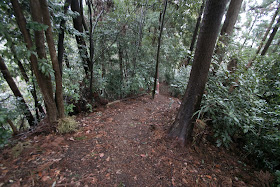


































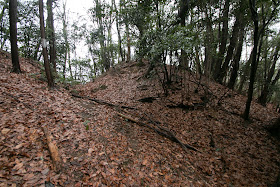
























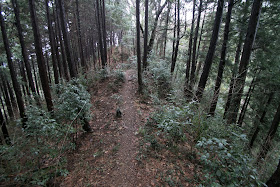





































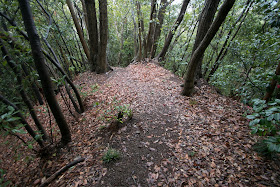




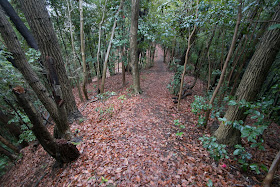








No comments:
Post a Comment